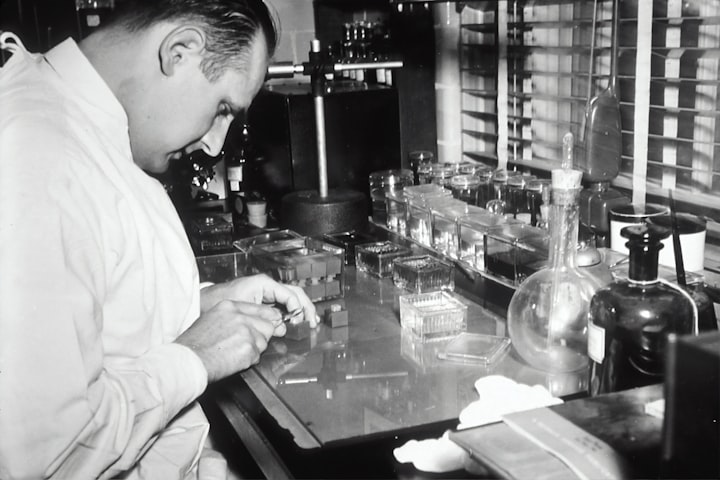First antiquated human DNA found from key Asian movement course
Sulawesi has a portion of the world's most seasoned cavern workmanship, however, antiquated human remaining parts have been scant — presently a fossil with DNA alludes to a puzzling ancestry of individuals.
The 7,000-year-old skeleton of an adolescent agrarian from Sulawesi in Indonesia could be the main remaining parts found from a secretive, old culture known as the Toaleans, analysts report this week in Nature1.
The to a great extent complete fossil of an about 18-year-old Stone Age lady was found in 2015 covered in a fetal situation in a limestone cave on Sulawesi. The island is essential for a district known as Wallacea, which frames the focal islands of the Indonesian archipelago.

DNA extricated from the skull recommends the lady imparted family to New Guineans and Aboriginal Australians, too with a terminated types of antiquated human.
"This is the first run through anybody's discovered antiquated human DNA around there," says Adam Brumm, a prehistorian at the Australian Research Center for Human Evolution at Griffith University in Brisbane, who is essential for a group that depicted the find.
The creators say she might be one of the Toalean public, whose presence is known from sparse archeological proof, like particularly indented stone devices, and who were thought to have lived in Sulawesi at around a similar time.

Passage to Australasia
The remaining parts were found close by Toalean-type apparatuses, giving solid proof of the lady's connect to these generally secret individuals, concurs Shimona Kealy, a paleontologist at the Australian National University in Canberra.
Wallacea is the passage through which progenitors of present day Papuan and Aboriginal Australians voyaged, yet not many antiquated human remaining parts have been found there. Quite possibly the most renowned is the minor 'Hobbit' skeleton of the early human species Homo floresiensis, which was found on the island of Flores, south of Sulawesi.

The hot, clammy tropical climate implies DNA debases quickly in fossils, making hereditary material an uncommon prize for specialists working in the district. The creators speculate that the skeleton's internment inside the Leang Panninge limestone cavern may have assisted with safeguarding sufficient DNA for examination.
Adding genomic investigation to archeological proof "gives substantially more understanding into the early populace developments and hereditary variety of individuals around there", Brumm says.
Kealy says the straightforward truth that DNA has been removed from a fossil in this difficult climate for DNA protection is a critical accomplishment of the venture. "To see these folks get a sufficient grouping that they can really do investigation on it — and from something 7,000 years of age, which is very noteworthy — that is the genuine fervor," she adds.

Floods of relocation
The lady's genome recommends a comparable degree of relatedness to introduce day Aboriginal Australians and New Guineans, inferring that her heredity split off before both of those gatherings veered from each other around 37,000 years prior, says co-creator Selina Carlhoff, who explores populace hereditary qualities at the Max Planck Institute for the Science of Human History in Jena, Germany.
Kealy says it's conceivable that the lady's predecessors were essential for a development of individuals relocating through Sulawesi to Australia and New Guinea around 50,000–60,000 years prior, yet that her heredity shaped a branch populace that stayed in Sulawesi. Another chance is that her predecessors were important for a later return wave of relocation back into Wallacea from Australia and New Guinea, Kealy says.

The lady's genome likewise contained Denisovan DNA. The Denisovans are a wiped out subspecies of an old people who lived 500,000–30,000 years prior, and whose presence is known uniquely through fossil revelations in Siberia and on the Tibetan Plateau.
The presence of Denisovan hereditary material — additionally found in individuals in Australia and New Guinea — recommends that Wallacea may have been an area in which Denisovans and present day people blended and interbred.

There's additionally whether or not this individual may be connected to 44,000-year-old cavern artworks found in 2019 in Sulawesi — viewed as a portion of the world's most seasoned known metaphorical cavern craftsmanship. "It would be super-intriguing to have the option to sort out in case there were any associations between individuals who made the artworks and the [Toaleans]," says Carlhoff.
Hereditary follows in current occupants
The area around Leang Panninge is today occupied by individuals of the Bugis and Makassar societies of Indonesia. These individuals are relatives of Austronesians who settled there in the wake of advancing from Taiwan around 3,500 years prior.

The lady's genome shows no hint of Austronesian DNA, since she lived some time before that movement occurred. Yet, a critical inquiry for scientists is whether the Bugis and Makassar individuals have connections to the old gathering to which she had a place.
Indonesian researchers associated with the venture have named the lady Bessé', which is a Bugis word for 'young lady'. "Albeit truly not quite the same as the current populace of Sulawesi, the Bessé' will in any case be viewed as a component of mankind's set of experiences on the island," says study co-creator Muhammad Nur, an excavator at the University of Hasanuddin in South Sulawesi.
Brumm says that no hint of the lady's hereditary ancestry has so far been found in examples taken from advanced occupants of Sulawesi. Nonetheless, this could be on the grounds that the different populace has not been inspected completely enough.
It's conceivable "that relatives of these Toalean people groups endure and lived on in certain pieces of South Sulawesi up to this point, and their qualities could in any case be enduring today, despite the fact that their way of life vanished millennia prior", Brumm says.






Comments
There are no comments for this story
Be the first to respond and start the conversation.